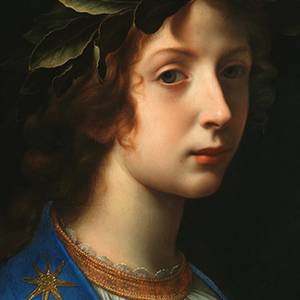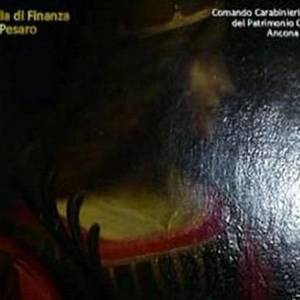“The Medici’s Painter: Carlo Dolci and 17th-Century Florence” is an exhibition currently on view at the Davis Museum at Wellesley College and is the first one in the US dedicated to the Italian Baroque master.
You chose: renaissance
-
-
Pasta may be Italy’s most famous first course, but rice is equally key to Italian cuisine. During the Renaissance, the swamps near Milano were turned into rice paddies, and rice has played a starring role ever since. One of our favorite Milanese dishes is Saffron Risotto.
-
The hidden dog in the backdrop of the painting's rocky setting is said to be Leonardo’s denouncement of the corrupt papacy of his time.
-
Witness a timeline of oil paintings organized by the curators of the Borghese Gallery in Rome of the transitions in Caravaggio's still life career juxtaposed with the work of those he influenced.
-
Art & CultureTravel through time on the second floor of the Uffizi Gallery to witness newly exhibited sketches from the 16th Century Venetian School in tandem the Tuscan and Venetian Oil Paintings to understand the stylistic influence and conversation between artists that transcended through the Italian Renaissance.
-
For the first time in New York an exhibition that will guide you through the captivating beauty of Renaissance. From February 20 the MOBIA, Museum of Biblical Art, will have on display twenty-three masterpieces representative of the Florentine Renaissance. A journey inside the Florence pf the 14th and 15th centuries, among the sculptures by Donatello, Brunelleschi, Luca della Robbia, Nanni di Bianco and many others.
-
Salon/Sanctuary Concerts offers the New York public the opportunity to “travel” to Medieval Florence, Italy through two extraordinary musical performances featuring an organist from the Duomo of Florence and a globally acclaimed countertenor from across the Atlantic.
-
One of Leonardo da Vinci’s priceless masterpieces of a Renaissance noblewoman, lost for centuries, found in 2013, then lost once more until being rediscovered this summer. Finally Italian and Swiss police were able to reclaim the lost painting upon discovering of “advanced stage” negotiations to sell it.
-
Italian language and Italian culture make an inseparable pair. Ilaria Costa, executive director of the Italian American Committee on Education (IACE), speaks about this and recounts how difficult it is, in the Tristate area, to promote everything Italian through the language. It’s surprising – but not surprising to us at i-Italy – that many Americans, who do not have a familial relationship with our country, are interested in studying our language. The charm of our culture penetrates America, regardless of the blood ties of its inhabitants.
-
Leonardo da Vinci's Vitruvian Man represents a male figure placed in both a circle and square, as specified by Vitruvius in his treatise De Architectura (On Architecture). A Conversation with Prof. Paola Salvi from the Accademia of Belle Arti, Milan, and the artist Michelangelo Pistoletto







































